Houston Artists at the Museum of Fine Arts, Houston - the 1940s
A Centennial Celebration
The Museum of Fine Arts Houston is 100! That’s right, MFAH opened its doors to Houstonians and the world the first time in 1924 – the first art museum in Texas, and now one of the premier art museums in the country – and the world.
Such a momentous centennial is worth celebrating. And so I invite you to join me in that celebration with a look back, decade-by-decade, at one work for each year, made by a Houston artist and shown in the galleries of MFAH. Some will be in the MFAH permanent collection; some will not be. I started in September with the 1920s. Then looked at the 1930s. This month - no surprise - focuses on the 1940s. And next month … well, you get the idea!
HAPPY 100th, MFAH! Here’s to many hundred more.
1940 - Robert Preusser, 1919-1992. Composition No. 1, Composition No. 2, Composition No. 3, all 1940, casein and tempera (and in No. 3 ink, wax, crayon and graphite) on wove paper. Purchase prize for group of three in the Houston Annual Exhibition of 1940.
Early study with Houston artist, McNeill Davidson, helped the precocious young Preusser develop his then unconventional style of art through the late 1930s. With Davidson’s encouragement, he went to Chicago in 1939 to continue his studies with László Moholy-Nagy at the New Bauhaus, patterned on the original German Bauhaus, which had been suppressed by the Nazis. These three works embody some of the new discoveries Preusser made in Chicago. When the group won the MFAH Purchase Prize in 1940, they entered the permanent collection - the first “non-objective” works to do so.
1941 - Gene Charlton, 1909-1979. Roses, Eggplant, Oranges, ca.1941/42, oil on canvas. Purchase prize for group of three in the Houston Annual Exhibition of 1942.
Charlton, like Robert Preusser (above), had studied with McNeill Davidson. By the time these three gorgeous paintings won the MFAH Purchase Prize in 1942 - joining Preusser’s three in the permanent collection - Charlton had become a fully mature artist, already being recognized nationally and internationally. He went on to an impressive career in New York and Rome - always anchored in his formative Houston years.
1942 - Carden Bailey, 1911-1997. Portrait of Bennett Black, ca.1942, oil on canvas. Exhibited in the Houston Annual Exhibition for 1943.
Bailey was another of McNeill Davidson’s “boys,” as she affectionately referred to them. After study at the Pennsylvania Academy of the Fine Arts, he returned to his native Houston, joining Davidson’s circle, and establishing a long-term partnership - both professional and personal - with fellow artist, Gene Charlton. Bailey’s talent for portraiture blossomed, and he became the go-to choice for Houstonians prominent socially and in the arts. Bennett Black (1918-1981) was an executive in his family’s furniture business by day, but at other times he was an active member of the Houston arts scene, encouraging his artist friends and organizing exhibitions of their work, as well as pursuing his passion as a balletomane, taking a significant place among the founders of the Houston Ballet.
1943 - Elizabeth Coley, 1894-1978. Sketching - “Liendo,” 1943, oil on canvas. Exhibited in the Houston Annual at MFAH in 1943.
“Mrs. Coley,” as the late Houston artist, Henri Gadbois, told me she was “always” called, had training as an artist at Greensboro (North Carolina) College, University of Tulsa and the Art Institute of Chicago. Though she seems not to have painted professionally, she clearly had an accomplished sense of color and composition. But her most important contribution to the art of Houston was probably as a founding member of Art League Houston, still a vital part of the Houston art world.
1944 - Ruby Lee Schiwetz, 1901-1986. The Steer Rider, ca.1944, ceramic. Purchase Prize winner at the 1944 Houston Annual Exhibition.
Ruby Schiwetz was a painter, sculptor, ceramist, spinner, weaver and teacher - and she was accomplished at them all. This delightful piece is one of the few ceramics ever to win the MFAH Purchase Prize over the years, and is part of the permanent collection. With that honor, her piece joined work by her husband, “Buck” Schiwetz, making them the only wife/husband couple to both have won the prize.
1945 - Jack Key Flanagan, 1920-1998. Flowers, ca1944, oil on canvas. Purchase Prize winner in the 1945 Houston Annual Exhibition at MFAH.
Though Flanagan won his Purchase Prize for Flowers, and is pictured in this newspaper photo with that winning painting, no adequate image of the work is available, so it is shown here beside his Flowers and Pears, also ca.1944, which he showed in the Houston Annual Exhibition for 1944. He made a tremendous contribution to MFAH, not only with his own art, but also as conservator of the collection, in which capacity he helped conserve and maintain the invaluable works from around the world in the collection. He also made beautiful and substantial frames for many of the works he conserves - as well as for his own paintings, as shown above.
1946 - Lowell Daunt Collins, 1924-2003. Beach Nudes, 1946, oil with Dorland’s wax on linen.
Lowell Collins had a long and distinguished career in Houston, as an artist, teacher and dealer. He showed his own art year after year in the Houston Annual Exhibitions, winning the Purchase Prize in 1952 and 1957. As a teacher at the Museum School, where he also served as Dean for many years, he also influenced the careers of thousands of other Houston artists. Few others have equaled his far-reaching impact on Houston art and artists.
1947 - Chester Snowden, 1900-1984. The Chinese Junk, ca.1947, oil on canvas. Exhibited in the Houston Annual Exhibition of 1947.
A native of Texas, Snowden spent some years in his youth in New York City, returning in the 1930s with his life-partner, the nature writer, Royal Dixon, also a Texan. The couple were together until Dixon’s death in the 1960s, turning their home/studio on Truxillo Street into a center of art and literature in Houston. Over the decades, Snowden taught in his own studio, as well as at the Museum School and University of Houston. He exhibited often in the Houston Annual Exhibitions at MFAH, winning the Purchase Prize in 1946 for his Sunday Quietude.
1948 - Margaret Webb Dreyer, 1911-1976. Trio, 1948, tempera with oil glaze. Exhibited in the Houston Annual Exhibition of 1948.
Dreyer was a burst of exuberance in the Houston post-war art world. She, and her husband Martin, also an artist and a newspaper man, made for an energetic duo throughout the period. In addition to making her own work, she also showed the work of others in her gallery - perhaps the only Houston gallery with the distinction of having its windows shot out by some (rumored to be members of the KKK) who disagreed with the message of the art she showed.
1949 - Frank Freed, 1906-1975. Community Spirit, 1949, oil on canvas. Exhibited in the Houston Annual Exhibition of 1949.
Freed has sometimes been dismissed as a “Sunday” painter, since he made his living in business, not by making art. But whatever day he painted them on, his satirical works have a bite that continues to sting through the decades. Community Spirit came out of the racial and social turmoil of the mid-century in Houston and around the country, but its impact is as strong today as when Freed showed it at MFAH in 1949.





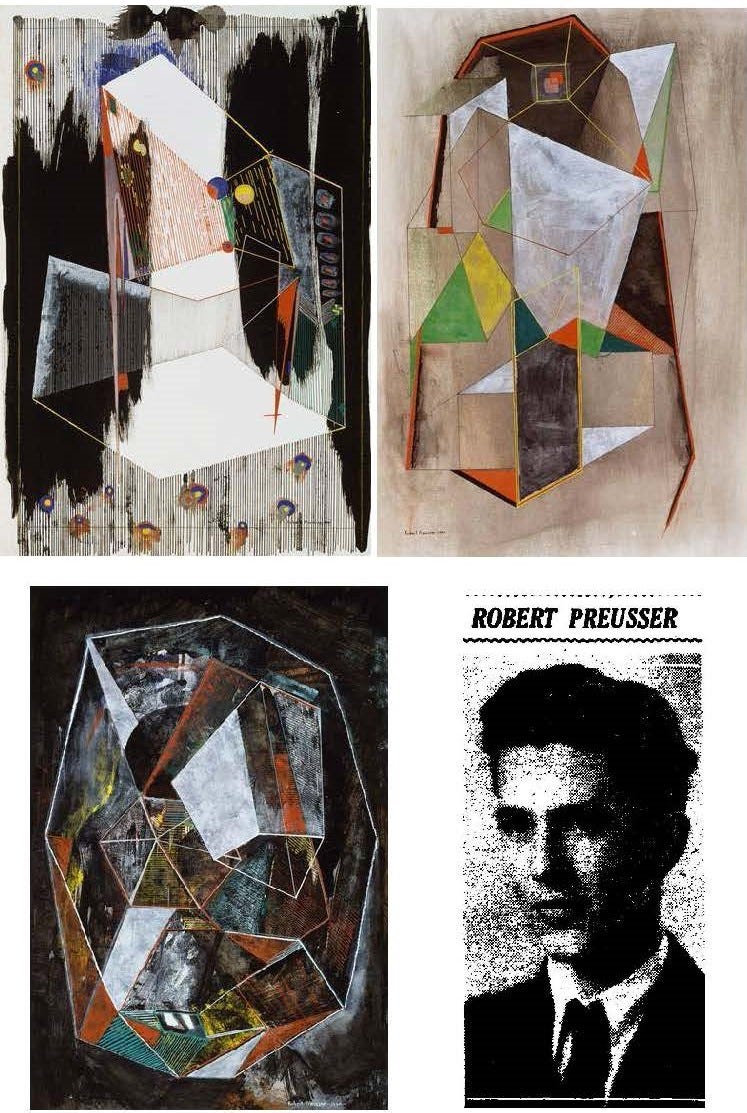
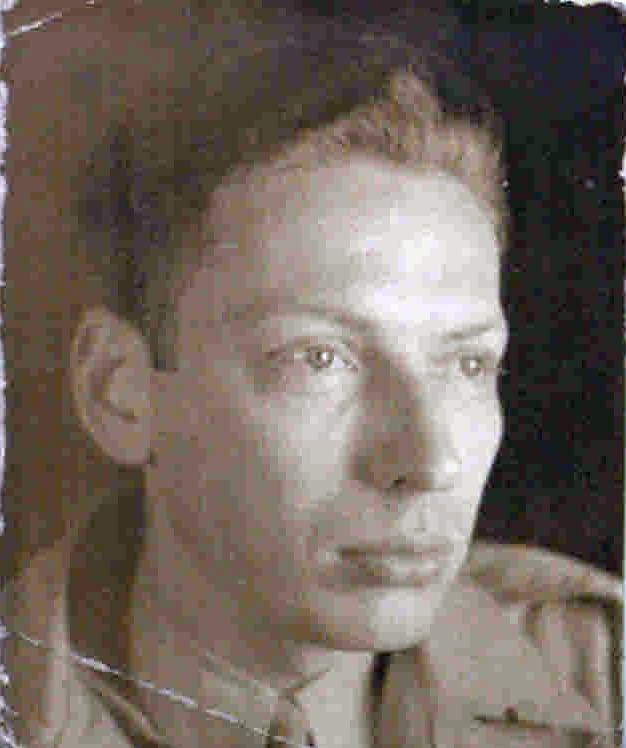
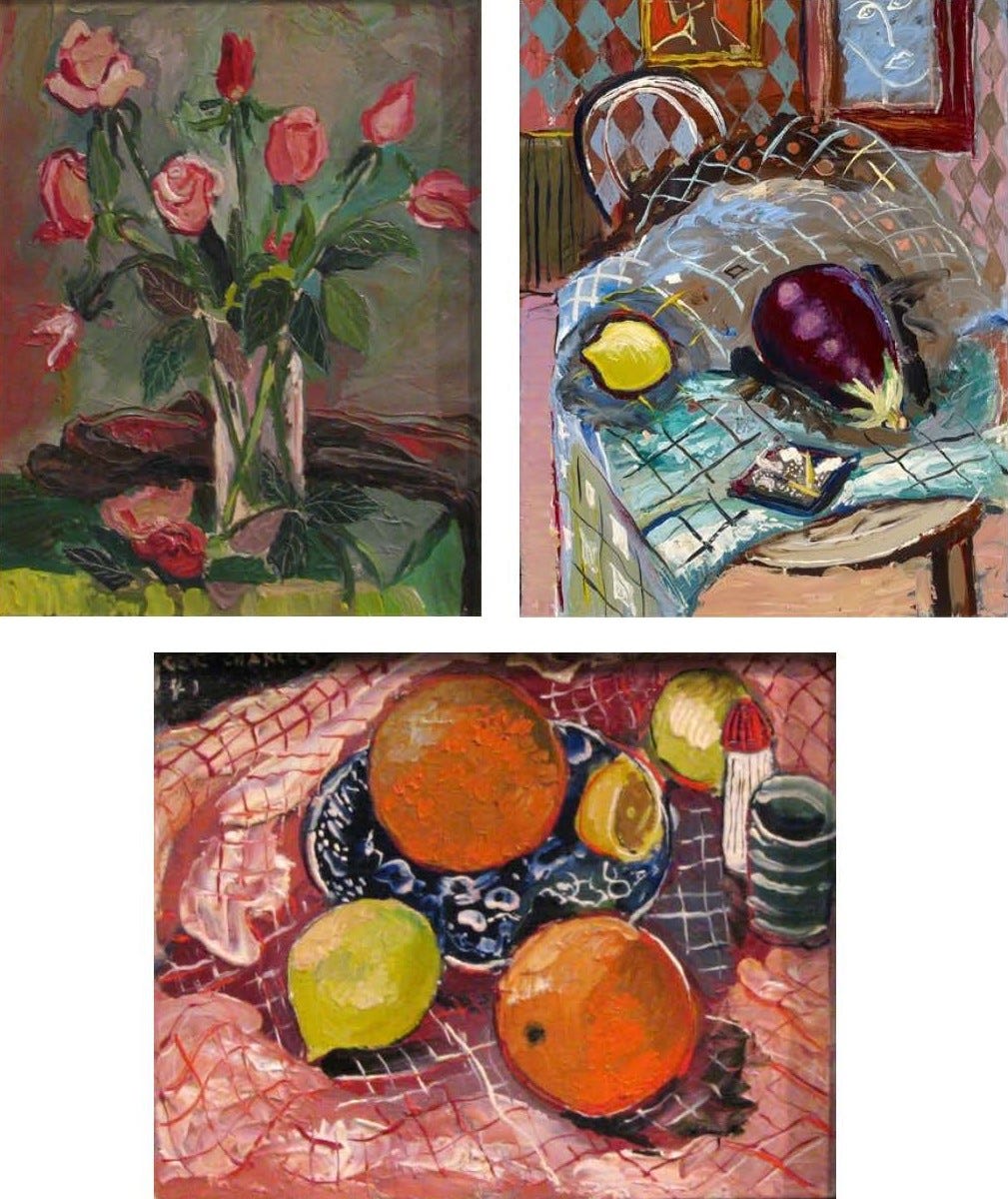
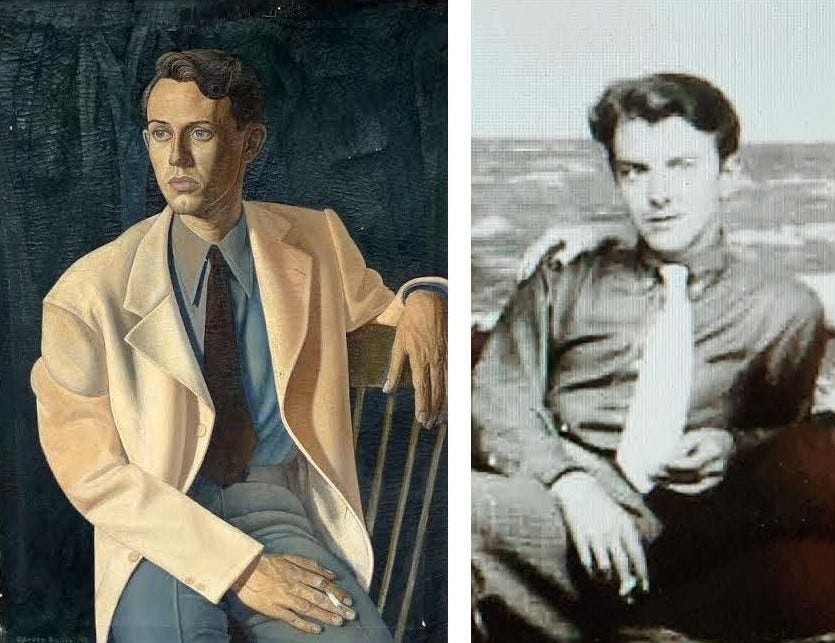
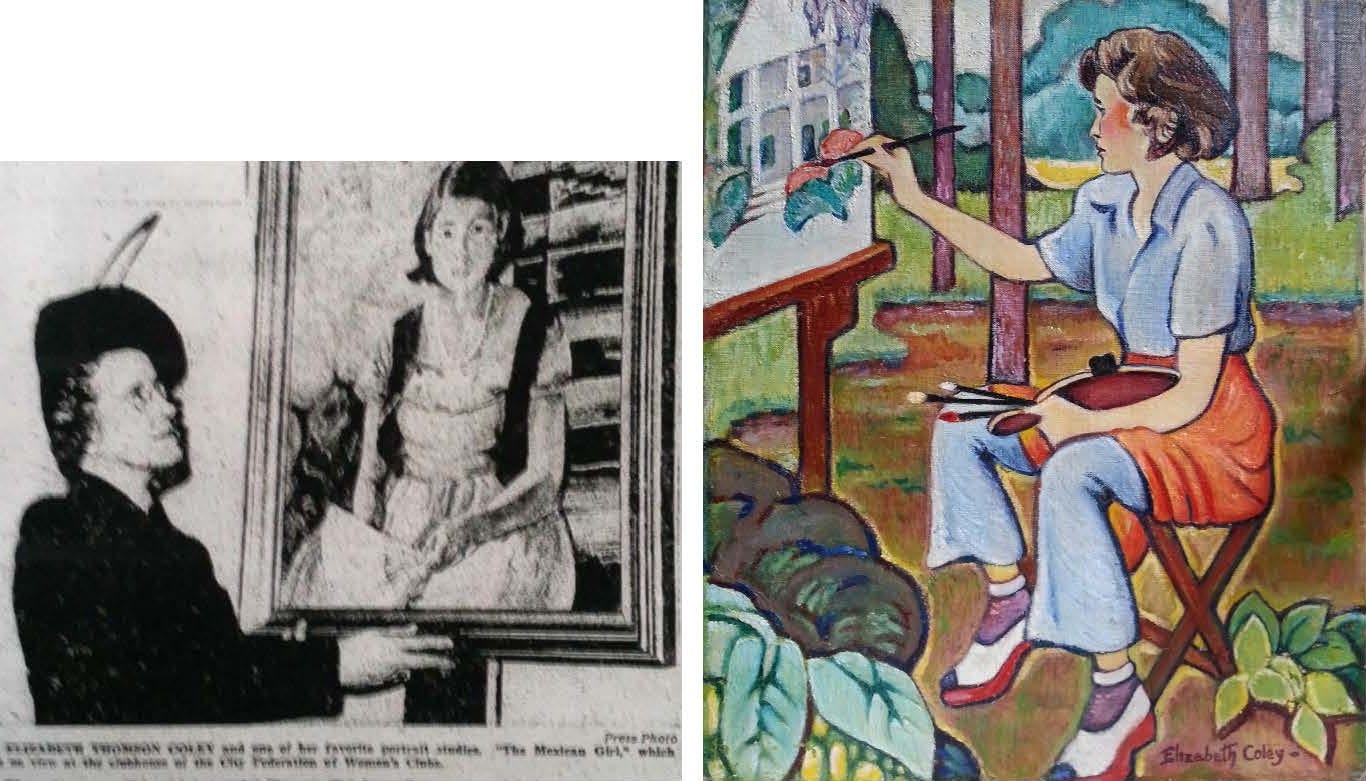
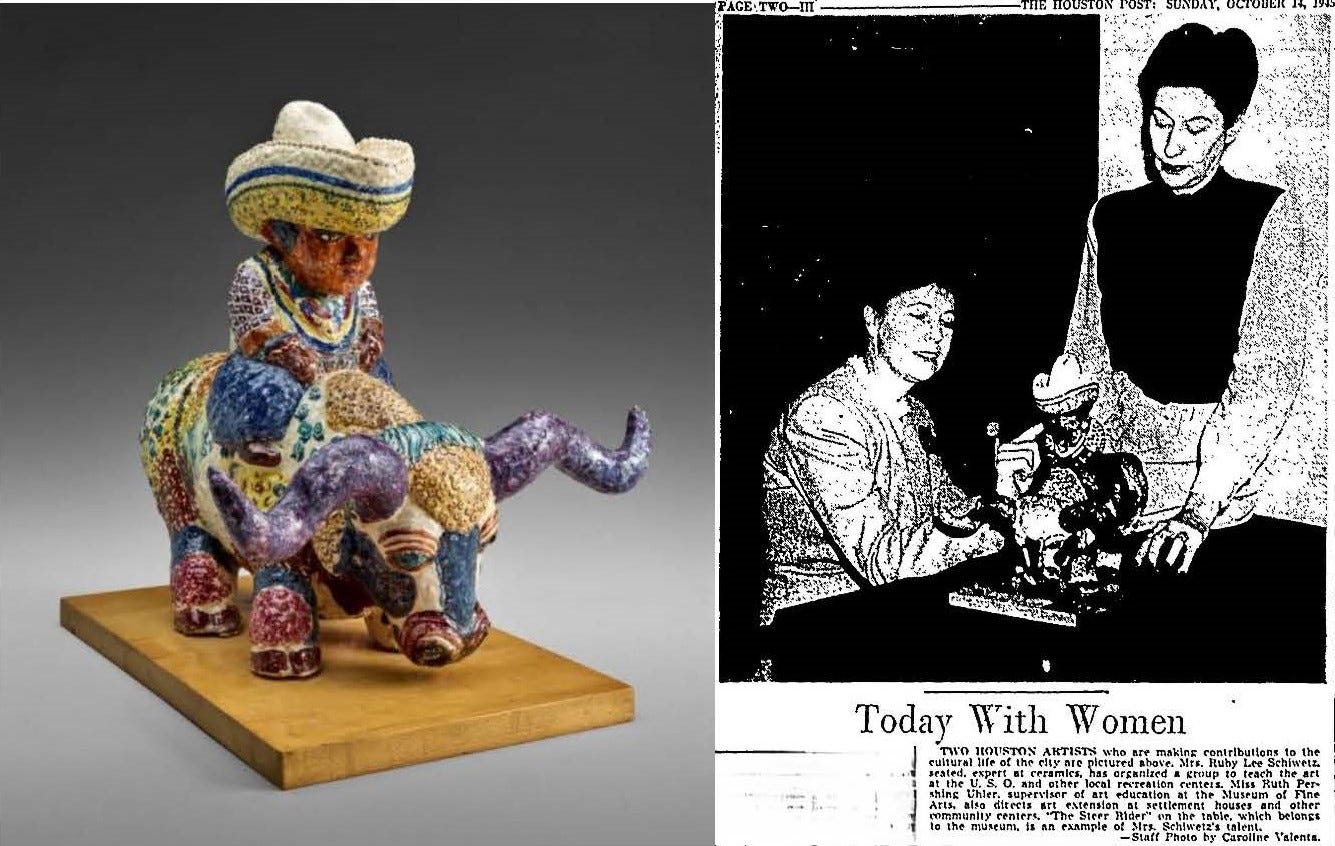
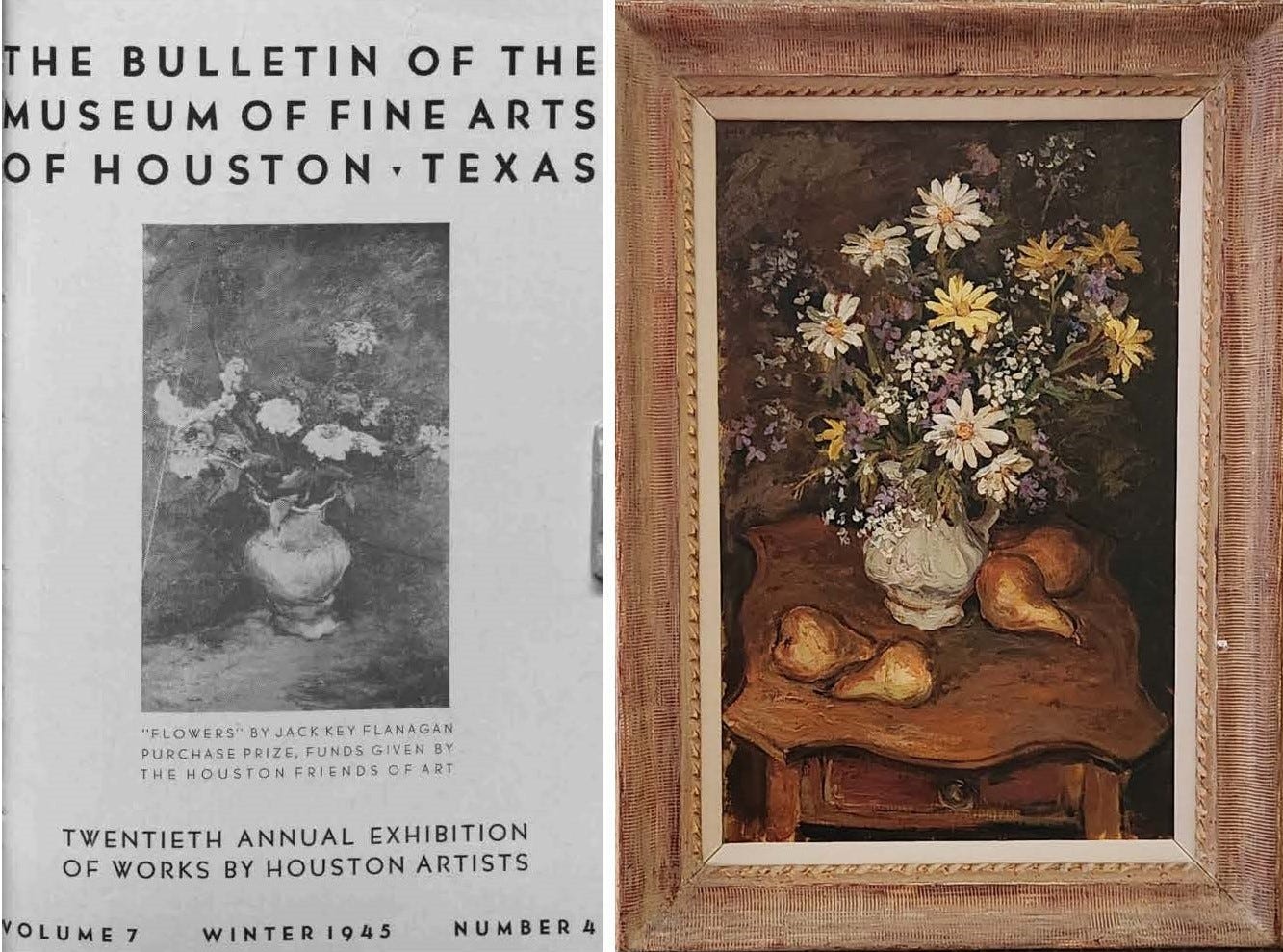
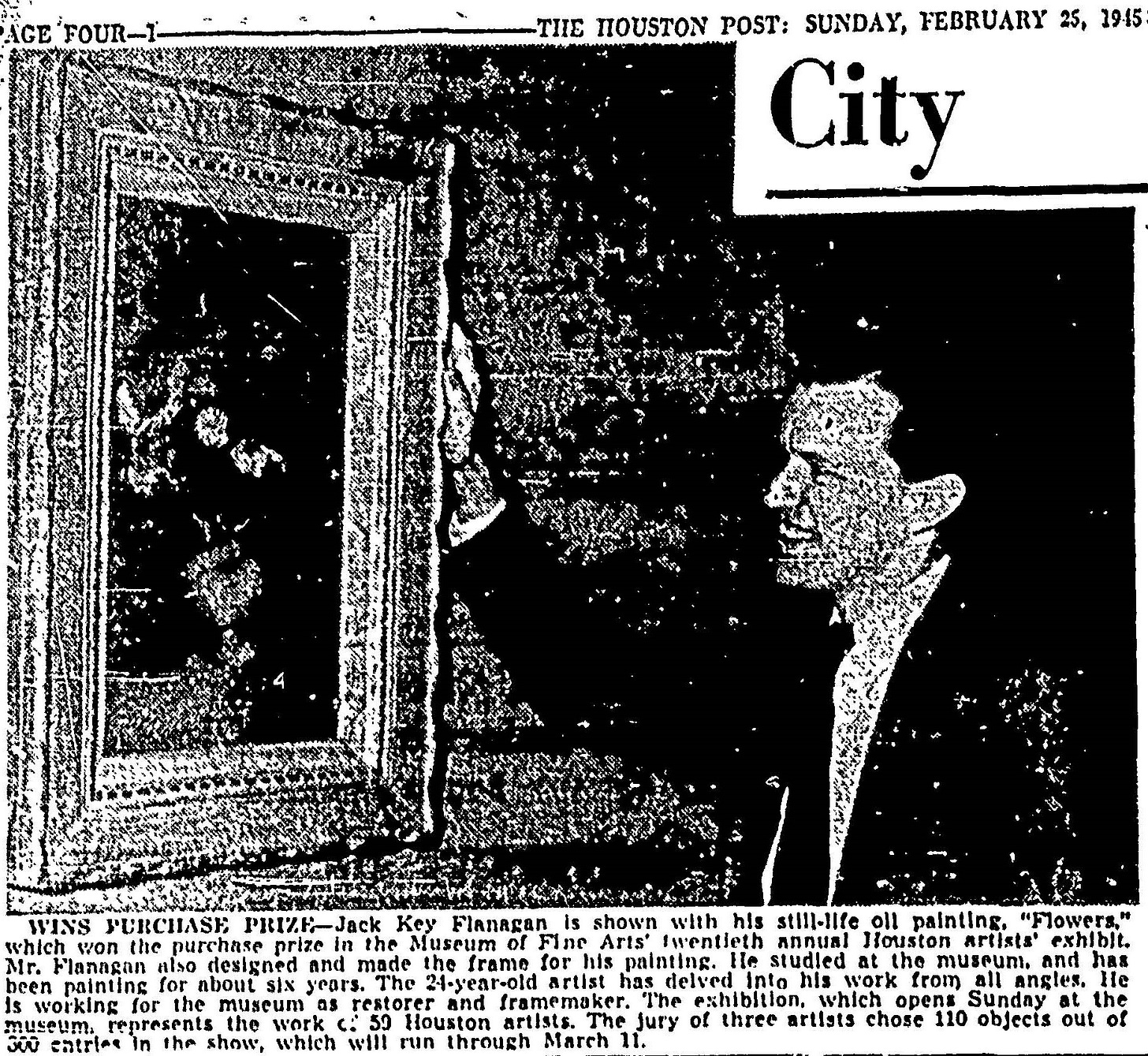
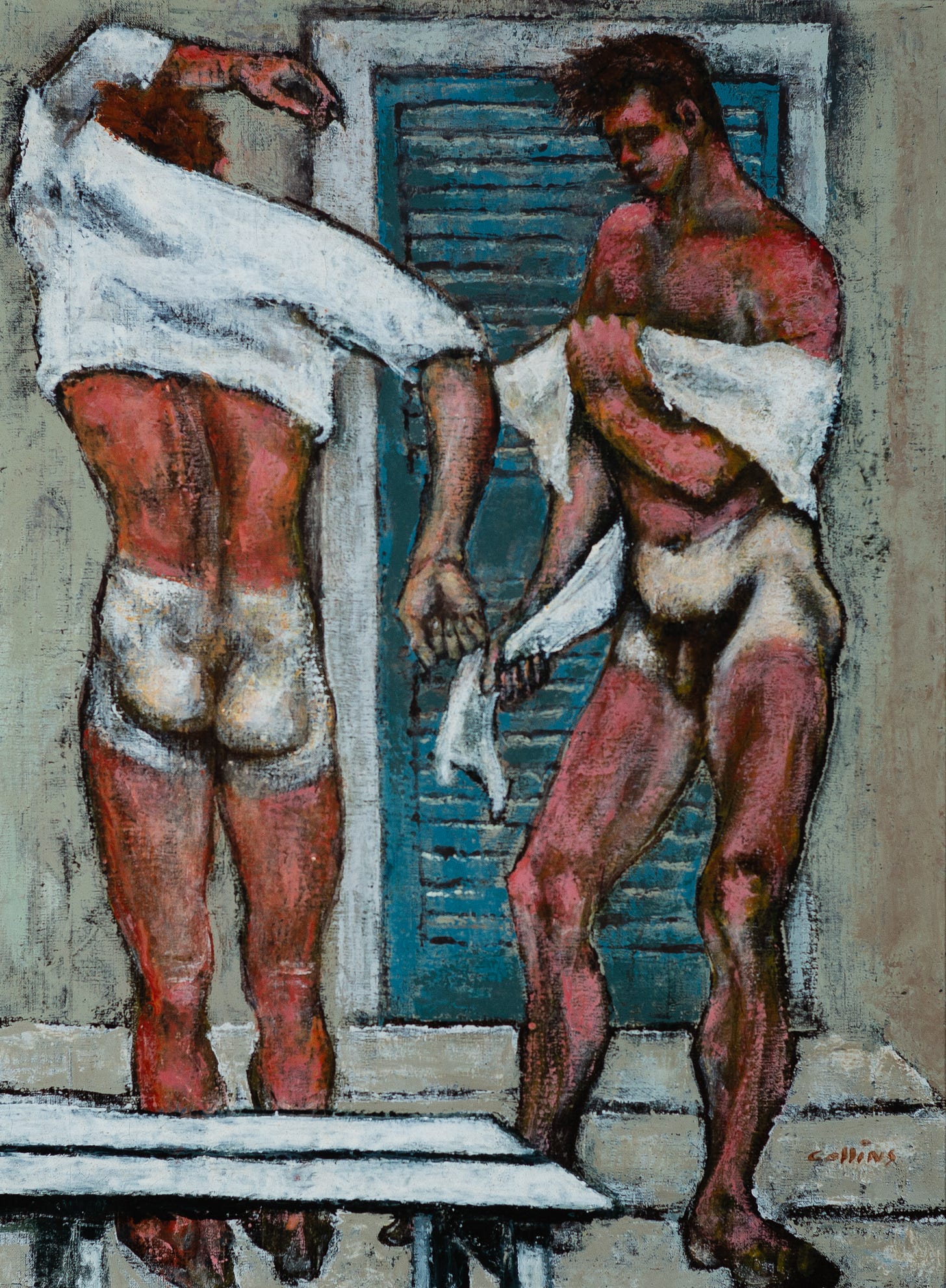

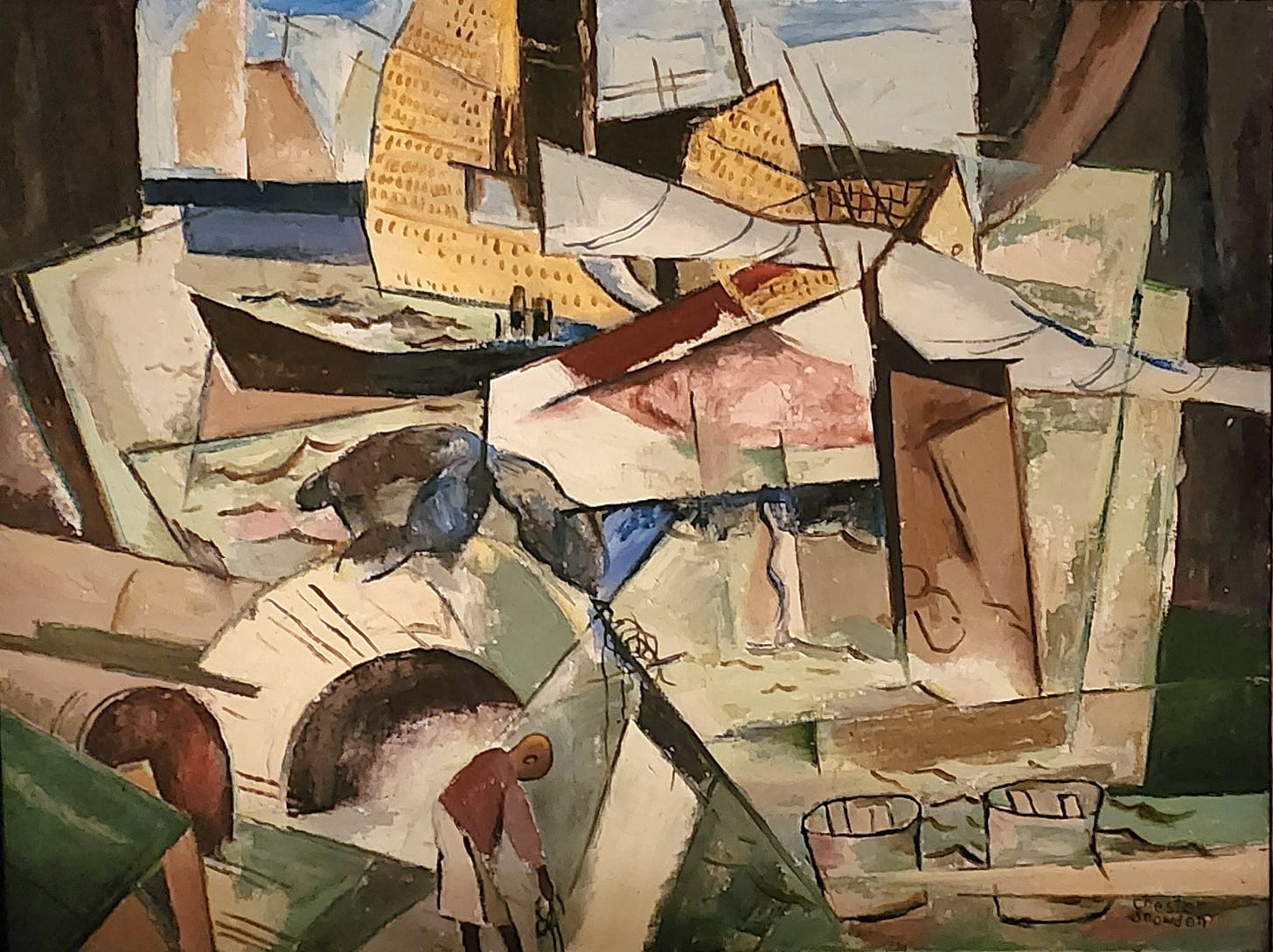
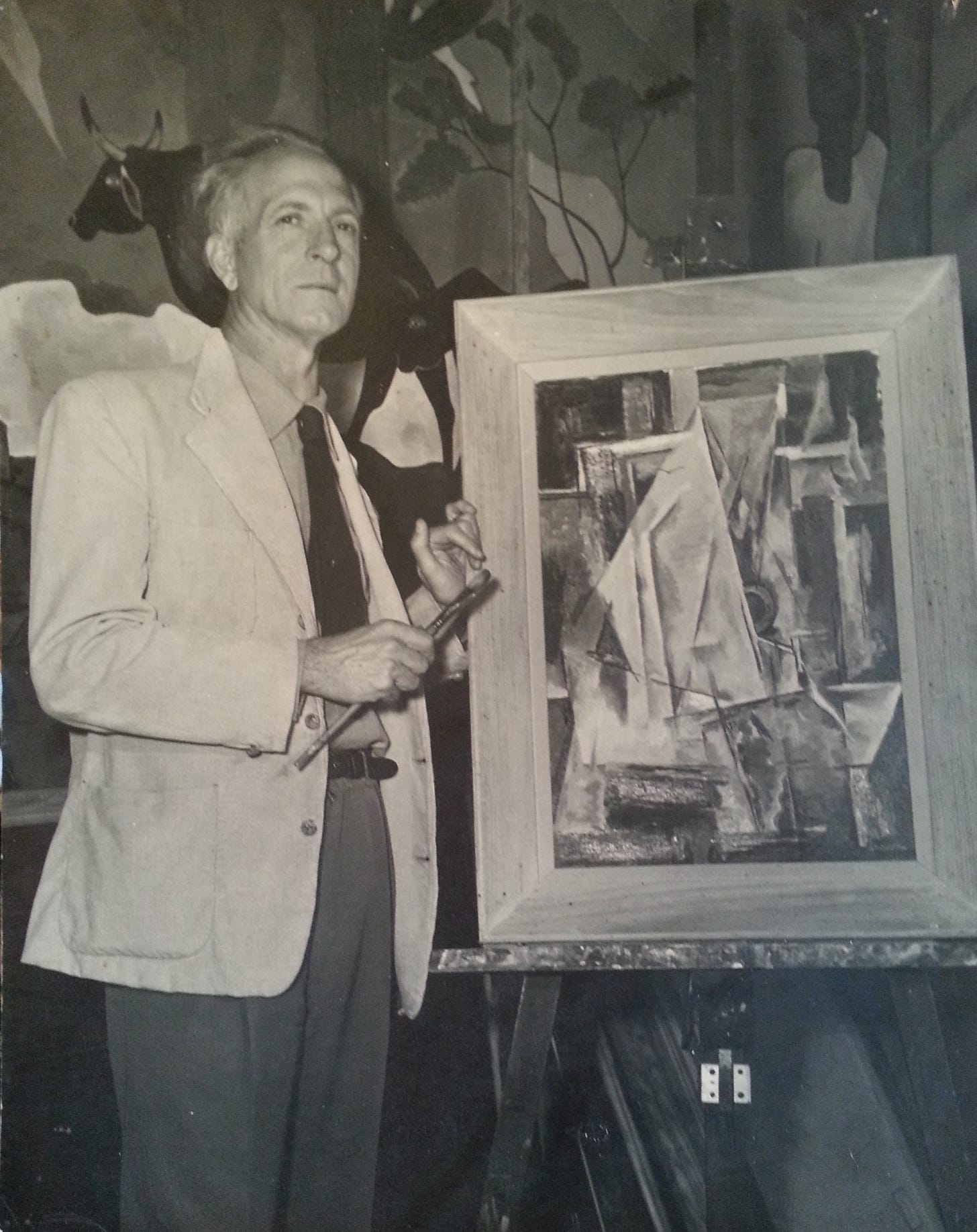
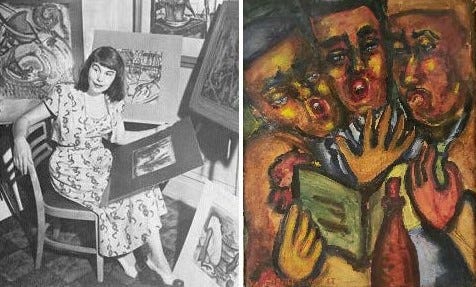
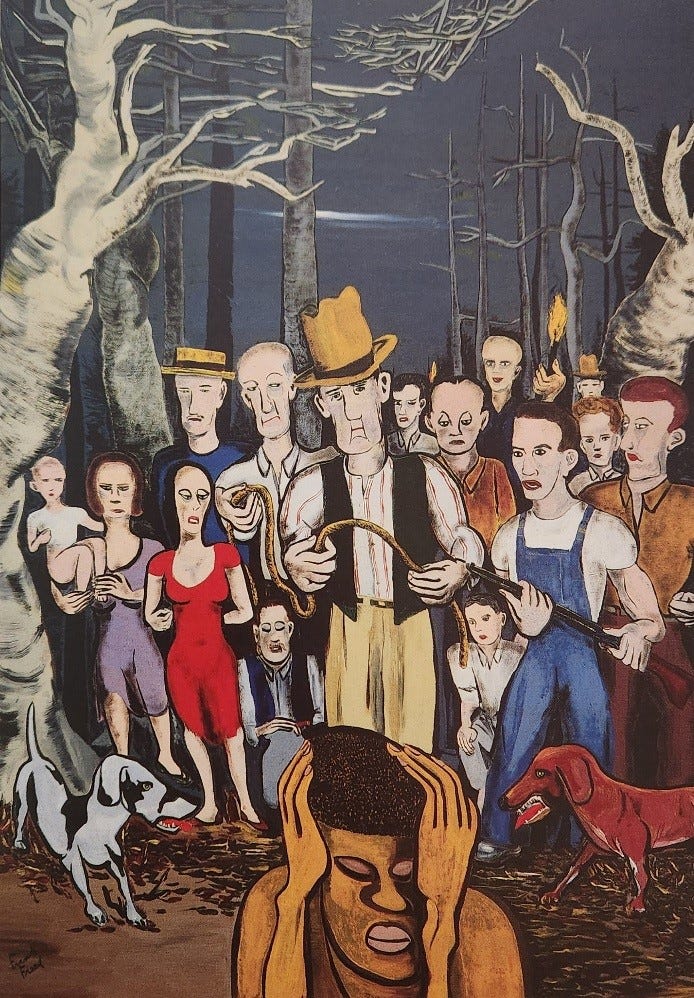
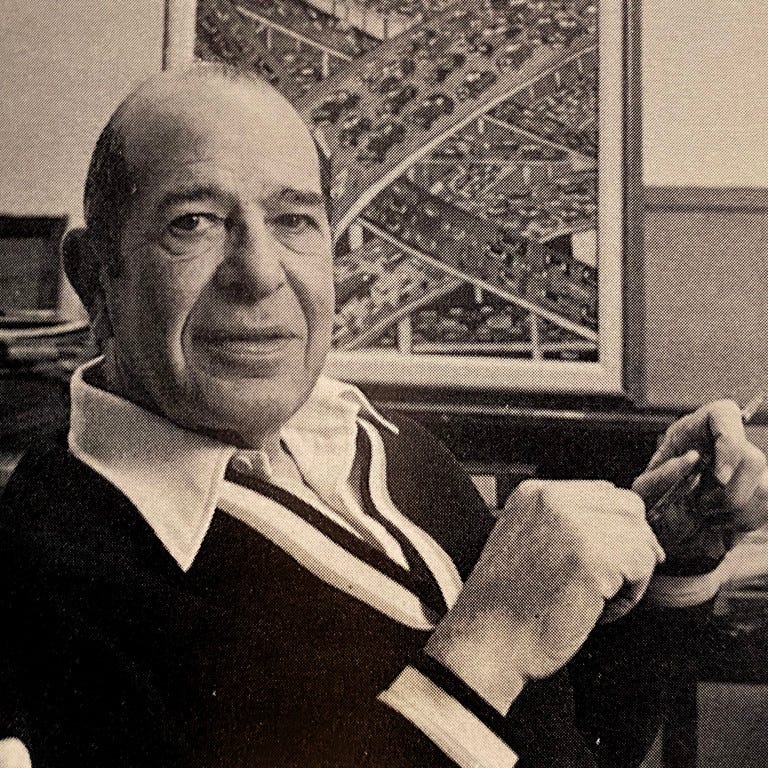
Wouldn't it be great if the MFAH put together an exhibition from your series?
Great to see these. Love Chester Snowden!